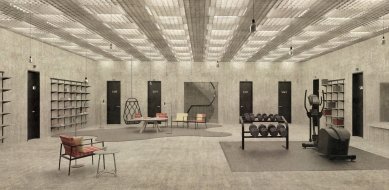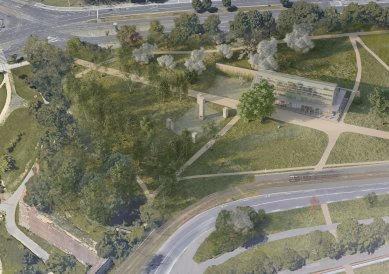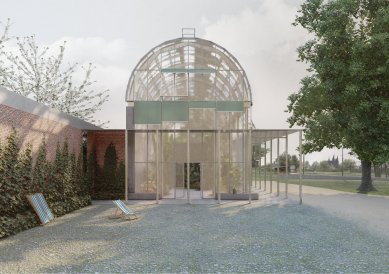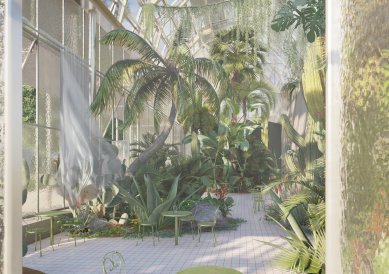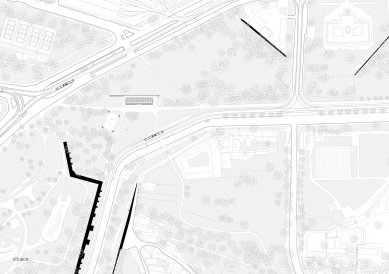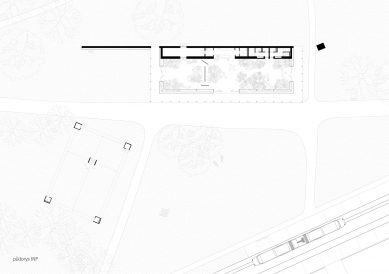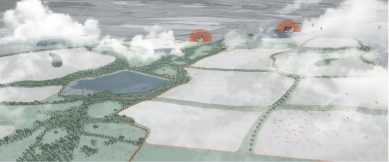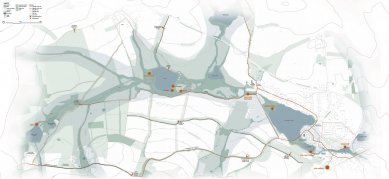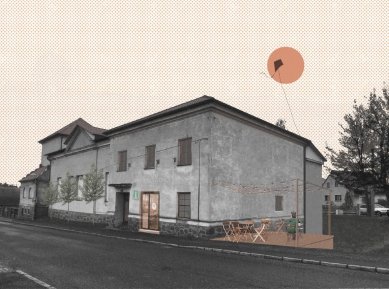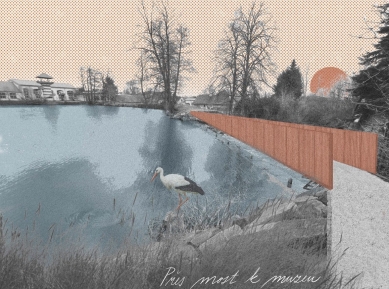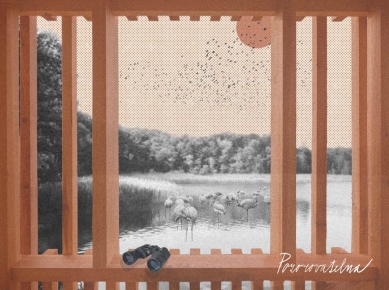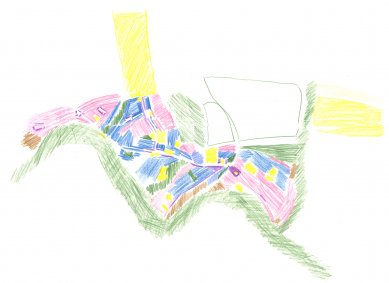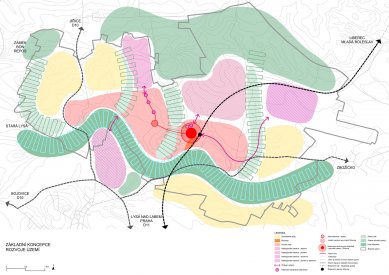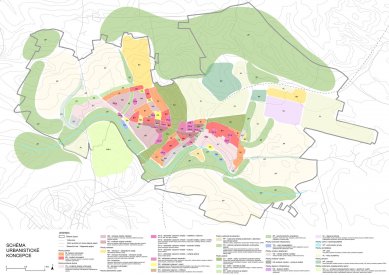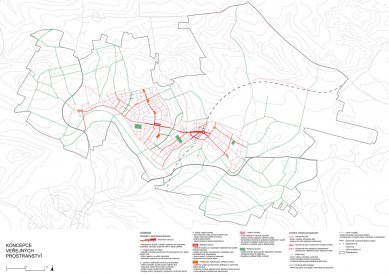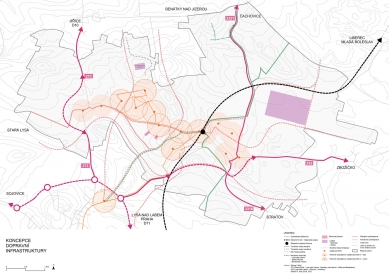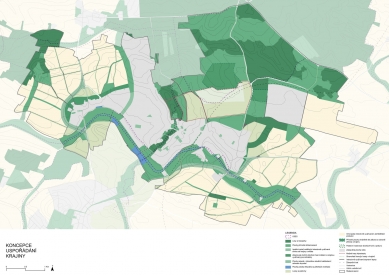
Results of the Dean's Awards of the Faculty of Architecture CTU 2022
Source
Kateřina Rottová, FA ČVUT
Kateřina Rottová, FA ČVUT
Publisher
Tisková zpráva
18.11.2022 17:50
Tisková zpráva
18.11.2022 17:50
Czech Republic
Prague
Dejvice
On Thursday, November 10, the Faculty of Architecture of the Czech Technical University in Prague held a ceremonial announcement of the winners of the second year of the Dean's Award. The jurors awarded the best studio and theoretical works from the past academic year. The works are on display at the FA ČVUT until December 5.
The aim of the competition is to showcase excellent creative works and reflect the quality and direction of teaching at the largest school of architecture in the Czech Republic. A new feature of the second year of the competition is a statuette designed by design graduate Klára Janypková, which was presented by Dean Dalibor Hlaváček to all the awardees.
"The Dean's Award was established only last year, but it has already become an established part of the faculty's life. I have the ambition for it to cover as wide a range of students' works as possible that are created at our school. That's why this year we added awards for the works of first-year students and theoretical semester projects. Nearly a hundred projects were nominated for award consideration, from which the juries selected 26 finalists and 6 winning works. I extend my heartfelt congratulations to all! I was also very pleased with the response to the competition for the design of the statuette for the winners of the Dean's Award. We received 30 proposals, from which we selected a magical fully glass artifact shaped like the building of the Faculty of Architecture,” says Dalibor Hlaváček.
In the category of first-year studio works, the winner is Natálie Finsterlová with a design for an underground shelter - a refuge from war. The jury appreciated the author's work with fundamental architectural themes that have been previously used, and their interpretation in a new way.
The best studio landscape project was developed by Lucie Flanderková and Jessica Kleistnerová. Their work focuses on the landscape of Rožmitál pod Třemšínem, and the jurors highlighted the small, intelligent interventions that support permeability and habitability of the landscape and the collaboration between the landscape architect and the architect.
Karolína Čechová and Victoria Cheremnykh won in the category of Urbanism for the Master Plan for Milovice. The jury praised the conceptual work and the presentation of the concept's genesis.
In the Architecture category, the first place went to Karolína Hausenblasová with her design for the Greenhouse Na Brusnici. The jury justified its decision by noting the comprehensive and readable intervention in the area, unobtrusive landscaping, and the quality of the project presentation.
The best diploma thesis of the past year at FA ČVUT is Úboč No. 34 - Institute of National Memory by David Foud. The jurors appreciated the sensitive and comprehensive treatment of a current topic.
The author of the best theoretical semester thesis was selected as Marianna Páleníková. Her investigation of the history and potential of the House of Trade Unions Istropolis in Bratislava was conducted with precision; the jury highlighted her careful research approach, which enabled her to find previously unknown historical materials.
The evaluation of studio and diploma projects was conducted by a jury composed of Dalibor Hlaváček, Jan Němeček, Tomáš Novotný, Jiří Opočenský, Lucie Vogelová, and Markéta Zdebská. The theoretical works were evaluated by Dalibor Hlaváček, Josef Chybík, Petr Kratochvíl, Henrieta Moravčíková, Martin Pospíšil, Maria Topoľčanská, and Petr Vorlík.
The jury decided not to award a design prize in the category of studio works for years 2-5 and in the category of Science and Research.
Winners of the Dean's Award 2022:
Dean's Award for a first-year studio project
Natálie Finsterlová – Shell, studio Sládek–Blank
Author's statement: War. A word that invokes feelings of anxiety, fear, and danger in each of us. However, one can take refuge underground before the war. In my design, each of the three floors features a square open space and small chambers utilized in various ways: as a sleeping area, a bathroom, a storage room. One can navigate through the bunker using spiral stairs and an elevator, both of which lead to a cabin above ground, illuminated only by light from the internal square atrium.
Jury's assessment: A progressive work with the theme of fortress floor plans. The jury was fascinated by the innovative translation of this principle underground and the creation of a bunker as a refuge from war. The author works with fundamental architectural themes previously employed but interpreted them in a new way. By using the principle of serviced and servicing spaces and defining their mutual proportions, a pleasant space for habitation is created. The project is relevant, spatially interesting, and presented very well.
Dean's Award for a studio project for years 2-5
Category Architecture
Karolína Hausenblasová – Greenhouse Na Brusnici, studio Císler–Milerová
Author's statement: The design stems from the character of the current state of the bastions of the northern fortifications of Prague. Isolated buildings, ruins of walls, park modifications, and close contact with the castle. I perceive corners as opportunities to connect worlds. Crossing boundaries. Brusnice is the forecourt of Lumbe's gardens, descending toward Jelení příkop. With good intentions, one can walk from Střešovice to Malostranská practically only through the gardens. The breached angle of the fortifications could become a new gateway to the old heart of Prague. The public greenhouse extends the axis of Jelení Street. Aligning the tram line according to the original curtain widens the meadow that opens up views of St. Vitus Cathedral. The silver colonnade wraps around the semi-transparent volume of the building, serving as a covered facility for the park. Etched glass combined with plants behind the façade creates a living image projected onto the park's walls. A garden within a garden.
Jury's assessment: The work presents a subtle, yet very complex and readable intervention in an area that certainly deserves cultivation. The unpretentiousness with which the student shapes road networks and terrain modifications creates a certain apparentness with which the design can be perceived. The accent in the form of a public greenhouse/café, a small architectural object with a simple operational solution, is adequate and creates a pleasant backdrop for the location. The design is additionally presented clearly and effectively.
Category Landscape Architecture
Lucie Flanderková and Jessica Kleistnerová – Rožmitál pod Třemšínem, Paths of Jakub Jan Ryba, Through the Landscape of the Fishpond Half-Moon, studio Salzmann–Bečvářová
Author's statement: In Rožmitál pod Třemšínem, water has been the theme for us from the very beginning. Thus, it is no surprise that we chose to focus on the pond system that weaves through the cadastral area. We want to bring people closer to water, and water closer to people. The proposal for individual minimal interventions was accompanied by a new road network, to which we added anti-erosion measures that could retain water on arable land.
Jury's assessment: The authors designed small intelligent interventions that support the permeability and habitability of the landscape. The work is presented engagingly and understandably. The jury also appreciates the teamwork between the landscape architect and the architect.
Category Urbanism
Karolína Čechová and Victoria Cheremnykh – Master Plan for Milovice, studio Šindlerová
Author's statement: The Milovice Master Plan project is based on the urban project of the summer semester of 2021. The project was founded on the vision of creating a twin town, Milovice - Lysá nad Labem. It specifically dealt with only the central part of the city with the most significant deficiencies between the railway station and the eastern tip of Benátecká Vrutice. The master plan encompasses the entire municipality of Milovice, including the area of Boží Dar. The master plan allows for further development of Milovice in development areas. It involves the addition of civic amenity areas, integrating the town into the broader landscape network, and creating a continuous quality network of public spaces utilizing the existing qualities of the area and supporting them.
Jury's assessment: The project brings conceptual work with the structure of the settlement, transportation infrastructure, and landscape arrangement into the planning process. Broader values are successfully translated into detailed solutions. The jury also appreciated the presentation of the concept's genesis, which is valuable when defending the project before stakeholders.
Dean's Award for a diploma thesis
David Foud – Úboč. 34 - Institute of National Memory, studio Hradečný–Hradečná
Author's statement: The diploma thesis addresses the design of the Institute of National Memory for the Plzeň region, located in a rural homestead in the village of Úboč in the Domažlice area, which was one of many estates affected by persecution in the 1950s. The design utilizes existing buildings and supplements them with both underground and above-ground structures conceived in a simple form, linking the buildings into one cohesive unit. There is a conversion of individual existing buildings, but the authentic appearance of the structures is preserved without significant outward interventions, serving as carriers of the memory of the place. The proposal includes an audiovisual exhibit of the Institute of National Memory and spaces for education.
Jury's assessment: The jurors praised the sensitive and comprehensive treatment of a current topic, where the cleaned historical structures are elegantly supplemented with elements of contemporary architecture.
You can view the work here.
Dean's Award for a theoretical semester thesis
Marianna Páleníková – House of Trade Unions Istropolis in Bratislava – Revitalization of an Icon of Slovak Post-War Architecture, supervised by Ing. arch. Tomáš Efler
Author's statement: The diploma thesis offers a vision for the revitalization of the Istropolis complex focusing on the House of Trade Unions. The ensemble is adapted to meet the functional requirements of the Cultural and Conference Center. In an effort to propose a strategy for working with second half of the twentieth-century architecture, a design is offered for a broader zone as well as for a separate object. Approaches to adapting to a new function, revitalizing the original concept, and contextual completion are employed. The proposal includes the solution of the adjacent public space, a new concept for communication, and functional layout. The goal is sensitive architecture that preserves and develops the qualities of the original concept for the needs of the future era.
Jury's assessment: The work examines the history, form, and potential of the significant architectural ensemble Istropolis in Bratislava from various perspectives. It focuses on urban and spatial contexts, materials used, structures, design, and artworks, thus providing a vivid picture not only of the building itself but also of the contemporary ambitions invested in it. The jury commended the precise, balanced structure of the text, its linguistic sophistication, and the careful research approach of the student, who, despite the attention drawn to Istropolis from numerous experts, managed to find previously unknown historical materials. The student also earned respect for her moral integrity and the energy she devoted to studying (and subsequently designing the revitalization of) the building, whose fate was already sealed at the time of this work.
The aim of the competition is to showcase excellent creative works and reflect the quality and direction of teaching at the largest school of architecture in the Czech Republic. A new feature of the second year of the competition is a statuette designed by design graduate Klára Janypková, which was presented by Dean Dalibor Hlaváček to all the awardees.
"The Dean's Award was established only last year, but it has already become an established part of the faculty's life. I have the ambition for it to cover as wide a range of students' works as possible that are created at our school. That's why this year we added awards for the works of first-year students and theoretical semester projects. Nearly a hundred projects were nominated for award consideration, from which the juries selected 26 finalists and 6 winning works. I extend my heartfelt congratulations to all! I was also very pleased with the response to the competition for the design of the statuette for the winners of the Dean's Award. We received 30 proposals, from which we selected a magical fully glass artifact shaped like the building of the Faculty of Architecture,” says Dalibor Hlaváček.
In the category of first-year studio works, the winner is Natálie Finsterlová with a design for an underground shelter - a refuge from war. The jury appreciated the author's work with fundamental architectural themes that have been previously used, and their interpretation in a new way.
The best studio landscape project was developed by Lucie Flanderková and Jessica Kleistnerová. Their work focuses on the landscape of Rožmitál pod Třemšínem, and the jurors highlighted the small, intelligent interventions that support permeability and habitability of the landscape and the collaboration between the landscape architect and the architect.
Karolína Čechová and Victoria Cheremnykh won in the category of Urbanism for the Master Plan for Milovice. The jury praised the conceptual work and the presentation of the concept's genesis.
In the Architecture category, the first place went to Karolína Hausenblasová with her design for the Greenhouse Na Brusnici. The jury justified its decision by noting the comprehensive and readable intervention in the area, unobtrusive landscaping, and the quality of the project presentation.
The best diploma thesis of the past year at FA ČVUT is Úboč No. 34 - Institute of National Memory by David Foud. The jurors appreciated the sensitive and comprehensive treatment of a current topic.
The author of the best theoretical semester thesis was selected as Marianna Páleníková. Her investigation of the history and potential of the House of Trade Unions Istropolis in Bratislava was conducted with precision; the jury highlighted her careful research approach, which enabled her to find previously unknown historical materials.
The evaluation of studio and diploma projects was conducted by a jury composed of Dalibor Hlaváček, Jan Němeček, Tomáš Novotný, Jiří Opočenský, Lucie Vogelová, and Markéta Zdebská. The theoretical works were evaluated by Dalibor Hlaváček, Josef Chybík, Petr Kratochvíl, Henrieta Moravčíková, Martin Pospíšil, Maria Topoľčanská, and Petr Vorlík.
The jury decided not to award a design prize in the category of studio works for years 2-5 and in the category of Science and Research.
Winners of the Dean's Award 2022:
Dean's Award for a first-year studio project
Natálie Finsterlová – Shell, studio Sládek–Blank
Author's statement: War. A word that invokes feelings of anxiety, fear, and danger in each of us. However, one can take refuge underground before the war. In my design, each of the three floors features a square open space and small chambers utilized in various ways: as a sleeping area, a bathroom, a storage room. One can navigate through the bunker using spiral stairs and an elevator, both of which lead to a cabin above ground, illuminated only by light from the internal square atrium.
Jury's assessment: A progressive work with the theme of fortress floor plans. The jury was fascinated by the innovative translation of this principle underground and the creation of a bunker as a refuge from war. The author works with fundamental architectural themes previously employed but interpreted them in a new way. By using the principle of serviced and servicing spaces and defining their mutual proportions, a pleasant space for habitation is created. The project is relevant, spatially interesting, and presented very well.
Dean's Award for a studio project for years 2-5
Category Architecture
Karolína Hausenblasová – Greenhouse Na Brusnici, studio Císler–Milerová
Author's statement: The design stems from the character of the current state of the bastions of the northern fortifications of Prague. Isolated buildings, ruins of walls, park modifications, and close contact with the castle. I perceive corners as opportunities to connect worlds. Crossing boundaries. Brusnice is the forecourt of Lumbe's gardens, descending toward Jelení příkop. With good intentions, one can walk from Střešovice to Malostranská practically only through the gardens. The breached angle of the fortifications could become a new gateway to the old heart of Prague. The public greenhouse extends the axis of Jelení Street. Aligning the tram line according to the original curtain widens the meadow that opens up views of St. Vitus Cathedral. The silver colonnade wraps around the semi-transparent volume of the building, serving as a covered facility for the park. Etched glass combined with plants behind the façade creates a living image projected onto the park's walls. A garden within a garden.
Jury's assessment: The work presents a subtle, yet very complex and readable intervention in an area that certainly deserves cultivation. The unpretentiousness with which the student shapes road networks and terrain modifications creates a certain apparentness with which the design can be perceived. The accent in the form of a public greenhouse/café, a small architectural object with a simple operational solution, is adequate and creates a pleasant backdrop for the location. The design is additionally presented clearly and effectively.
Category Landscape Architecture
Lucie Flanderková and Jessica Kleistnerová – Rožmitál pod Třemšínem, Paths of Jakub Jan Ryba, Through the Landscape of the Fishpond Half-Moon, studio Salzmann–Bečvářová
Author's statement: In Rožmitál pod Třemšínem, water has been the theme for us from the very beginning. Thus, it is no surprise that we chose to focus on the pond system that weaves through the cadastral area. We want to bring people closer to water, and water closer to people. The proposal for individual minimal interventions was accompanied by a new road network, to which we added anti-erosion measures that could retain water on arable land.
Jury's assessment: The authors designed small intelligent interventions that support the permeability and habitability of the landscape. The work is presented engagingly and understandably. The jury also appreciates the teamwork between the landscape architect and the architect.
Category Urbanism
Karolína Čechová and Victoria Cheremnykh – Master Plan for Milovice, studio Šindlerová
Author's statement: The Milovice Master Plan project is based on the urban project of the summer semester of 2021. The project was founded on the vision of creating a twin town, Milovice - Lysá nad Labem. It specifically dealt with only the central part of the city with the most significant deficiencies between the railway station and the eastern tip of Benátecká Vrutice. The master plan encompasses the entire municipality of Milovice, including the area of Boží Dar. The master plan allows for further development of Milovice in development areas. It involves the addition of civic amenity areas, integrating the town into the broader landscape network, and creating a continuous quality network of public spaces utilizing the existing qualities of the area and supporting them.
Jury's assessment: The project brings conceptual work with the structure of the settlement, transportation infrastructure, and landscape arrangement into the planning process. Broader values are successfully translated into detailed solutions. The jury also appreciated the presentation of the concept's genesis, which is valuable when defending the project before stakeholders.
Dean's Award for a diploma thesis
David Foud – Úboč. 34 - Institute of National Memory, studio Hradečný–Hradečná
Author's statement: The diploma thesis addresses the design of the Institute of National Memory for the Plzeň region, located in a rural homestead in the village of Úboč in the Domažlice area, which was one of many estates affected by persecution in the 1950s. The design utilizes existing buildings and supplements them with both underground and above-ground structures conceived in a simple form, linking the buildings into one cohesive unit. There is a conversion of individual existing buildings, but the authentic appearance of the structures is preserved without significant outward interventions, serving as carriers of the memory of the place. The proposal includes an audiovisual exhibit of the Institute of National Memory and spaces for education.
Jury's assessment: The jurors praised the sensitive and comprehensive treatment of a current topic, where the cleaned historical structures are elegantly supplemented with elements of contemporary architecture.
You can view the work here.
Dean's Award for a theoretical semester thesis
Marianna Páleníková – House of Trade Unions Istropolis in Bratislava – Revitalization of an Icon of Slovak Post-War Architecture, supervised by Ing. arch. Tomáš Efler
Author's statement: The diploma thesis offers a vision for the revitalization of the Istropolis complex focusing on the House of Trade Unions. The ensemble is adapted to meet the functional requirements of the Cultural and Conference Center. In an effort to propose a strategy for working with second half of the twentieth-century architecture, a design is offered for a broader zone as well as for a separate object. Approaches to adapting to a new function, revitalizing the original concept, and contextual completion are employed. The proposal includes the solution of the adjacent public space, a new concept for communication, and functional layout. The goal is sensitive architecture that preserves and develops the qualities of the original concept for the needs of the future era.
Jury's assessment: The work examines the history, form, and potential of the significant architectural ensemble Istropolis in Bratislava from various perspectives. It focuses on urban and spatial contexts, materials used, structures, design, and artworks, thus providing a vivid picture not only of the building itself but also of the contemporary ambitions invested in it. The jury commended the precise, balanced structure of the text, its linguistic sophistication, and the careful research approach of the student, who, despite the attention drawn to Istropolis from numerous experts, managed to find previously unknown historical materials. The student also earned respect for her moral integrity and the energy she devoted to studying (and subsequently designing the revitalization of) the building, whose fate was already sealed at the time of this work.
The English translation is powered by AI tool. Switch to Czech to view the original text source.

